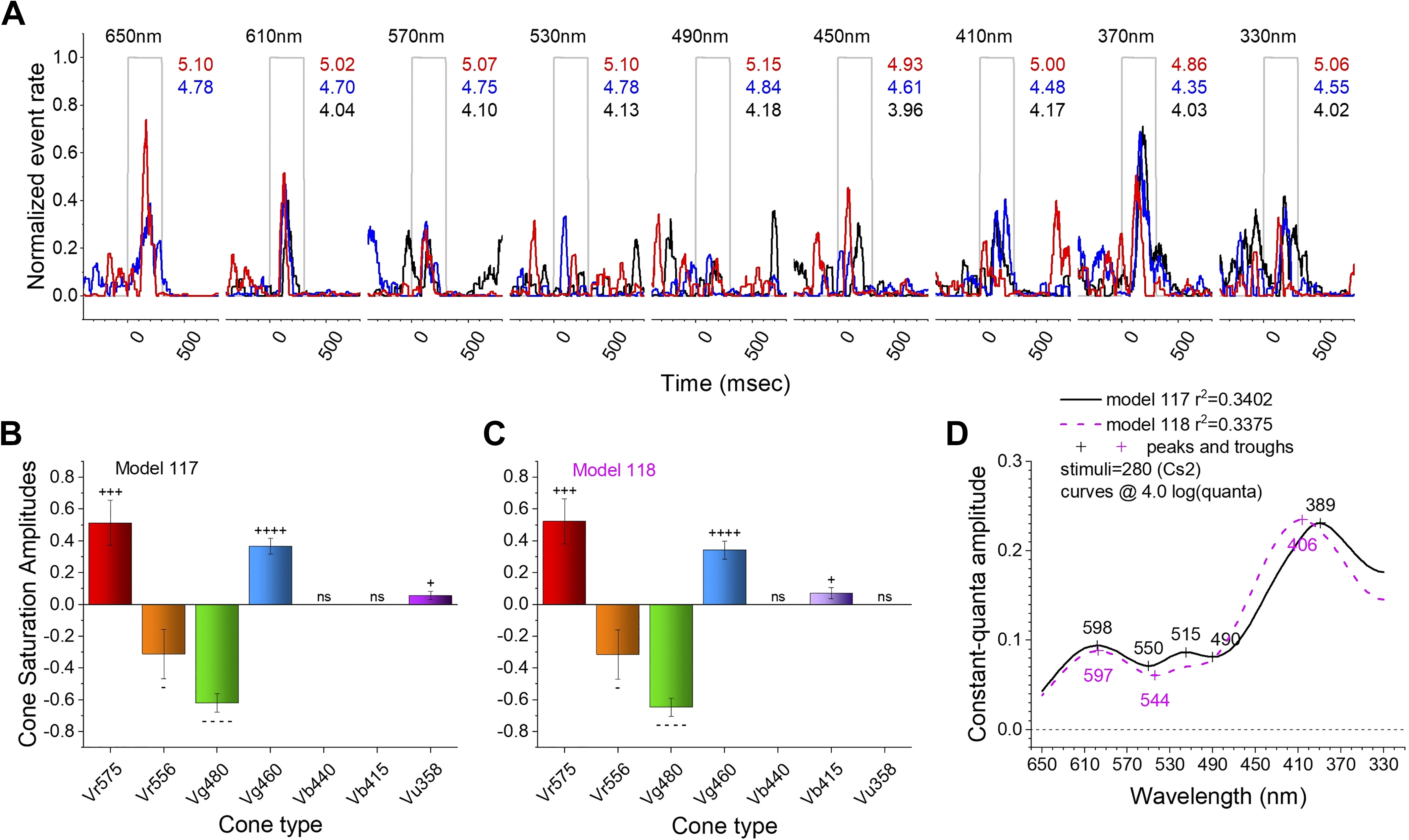Fig. 10 Transient-ON spectral patterns in an opponent ganglion cell (GC). A: red (650 nm, 610 nm) and UV (370 nm) stimuli evoked maximal spike rates in response to the Cs2 spectral protocol. Wavelengths appear above each nested set of 3 spike-rate discharge records, which are in response to different irradiances. The irradiances are selected from 7 total to give matching irradiances at each wavelength. These are equal quantal responses. The quantal brightness is given in log(hν·µm−2·s−1) to the right of each stimulus trace, with black corresponding to the dimmest, red to the brightest, and blue intermediate. B: model 117 fit the full, 280-point, GC data set best. R1 (Vr575), G1 (Vg460), and UV (Vu358) were modeled as excitatory and R2 (Vr556) and G3 (Vg480) as inhibitory. + and − signify excitation and inhibition, respectively, with the number of each symbol denoting the level of significance (as in Figs. 4 and 5). ns, Not significant. C: the residual variance for model 118 was indistinguishable from model 117 (F117,118 = 0.996, P = 0.97). Both models are pentachromatic and color opponent. Model 118 differs from model 117 only in the substitution of B1 excitation (Vb415) for UV excitation (Vu358). D: constant-quantal spectral curves for models 117 and 118. The curves are similar in shape and in peak and trough positions.
Image
Figure Caption
Acknowledgments
This image is the copyrighted work of the attributed author or publisher, and
ZFIN has permission only to display this image to its users.
Additional permissions should be obtained from the applicable author or publisher of the image.
Full text @ J. Neurophysiol.

